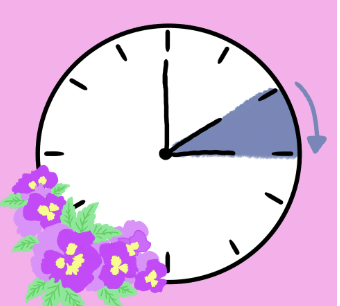
How could losing an hour of sleep turn into safer roads and cities, more efficient energy consumption, and more recreational time? Two words: daylight savings. We often complain about the sleep disruption and thus schedule disruptions that daylight saving time causes. However, daylight saving time concentrates our sunlight hours in the afternoon and early evening, and in doing so, recreation thrives, electrical energy is conserved, crime rates go down, and lives can be saved.
Falling Back on Old Traditions
Daylight saving time was not, in fact, invented to troll the public, but to actually try to reduce energy consumption during WWI and WWII. The United States government was trying to save energy for fighting the wars and popularized the idea that more light in the evenings would help the Americans win. Thus, daylight saving time was adopted.
However, when the wars ended, daylight saving time was repealed due to complaints from laborers who rose consistently early in the morning. So why is it still a thing? To put it simply, capitalism. Commercial interests aligned with having the clocks shifted to have more light in the evening and for this reason, lobbyists pushed for the biannual clock change.
Matching and Maximizing the American Lifestyle
The majority of Americans are still awake and active when the sun sets and into the early evening hours. By comparison, a much smaller amount are awake and active at sunrise. Standard time concentrates our sunlight hours into the morning, when most people are asleep and thus miss these hours of sun. However, if we shift our sunlight hours into the late afternoon and early evening, there are more hours where recreation can be maximized.
“I’m pro [daylight saving time],” said AP Environmental Science teacher Robert Goettler, “because without it, it would be getting light before 5am in the morning in the summer and most people are still sleeping. Because people are getting up later in the summertime, they would set their air conditioning to not turn on until later.”
Daylight saving time thus works well with the American lifestyle.
Saving Lives One “Spring Forward” at a time
Drivers have to be on extra high alert when driving at night, as it can be much harder to see pedestrians, bikers, and children playing. Vehicle-on-pedestrian collisions increase almost three times at the end of the day as the sunlight turns to twilight. However, these crashes significantly decrease in the morning when twilight becomes daylight.
By moving daylight to the morning hours, fatal crashes become much more prevalent as there is more time in the darker evenings when pedestrians, bikers and children can be hit. A study from Rutgers researchers found that 343 lives per year could be saved by moving to year round daylight saving time. That’s almost a life a day.
Crime and Darkness Walk Hand-in-Hand
If you imagine any kind of crime, for example, a robbery, you are likely to imagine someone in dark clothing with maybe a dark ski mask over their head that obscures their face. Now, think about the time of day the crime is being committed. It is likely that you are imagining the crime happening at night or in the evening. In actuality, the bulk of crimes appear to happen between 3:00pm and 11:00pm.
“I love daylight savings because of the freedom it gives women in the summer to be out later because there’s more hours of daylight,” said junior Isabelle Chabinyc. “I feel safer going outside and partaking in activities later in the evening if it’s lighter.”
With daylight hours pushing further into the evening in daylight saving time, the amount of darkness available to cover criminals dwindles making communities just a little bit safer.
But Isn’t the Hour Lost a Bad Thing for Sleep schedules?
The Monday after spring forward could be considered one of the worst Mondays of the year. In fact, as many Americans try to shift their sleep schedules, heart attacks increase around 24% in the week following spring forward and there’s even an increase after fall back. However, by getting rid of the biannual clock change, and switching to year round daylight savings time, these risks can be mitigated while the benefits can be enjoyed.
The benefits of daylight saving time far outweigh the benefits of standard time. Daylight saving time allows for lighter evenings, safer roads, lower crime rates and matches the American lifestyle much better than standard time. It is because of this that I believe daylight saving time should be implemented all year round. In this way, we would get all the extra benefits of daylight saving time while avoiding the hated time change.
Sources
- https://www.crimeinamerica.net/the-time-of-day-for-violent-and-property-crimes/#:~:text=3%3A00%20p.m.%20to%2011,p.m.%20and%2011%3A00%20p.m.
- https://www.ncbi.nlm.nih.gov/pmc/articles/PMC1615292/?page=3
- https://go.gale.com/ps/retrieve.do?tabID=Infographics&resultListType=RESULT_LIST&searchResultsType=SingleTab&retrievalId=1a211632-4ee9-49f3-a1b1-1c4ebc5bfc9c&hitCount=3&searchType=TopicSearchForm¤tPosition=1&docId=GALE%7CQNGONN650538133&docType=Interactive+infogram&sort=Relevance&contentSegment=ZXAY-MOD1&prodId=OVIC&pageNum=1&contentSet=GALE%7CQNGONN650538133&topicId=ITOQGN798680865&searchId=&userGroupName=sant89825&inPS=true
- https://worldpopulationreview.com/country-rankings/average-wake-up-time-by-country




















